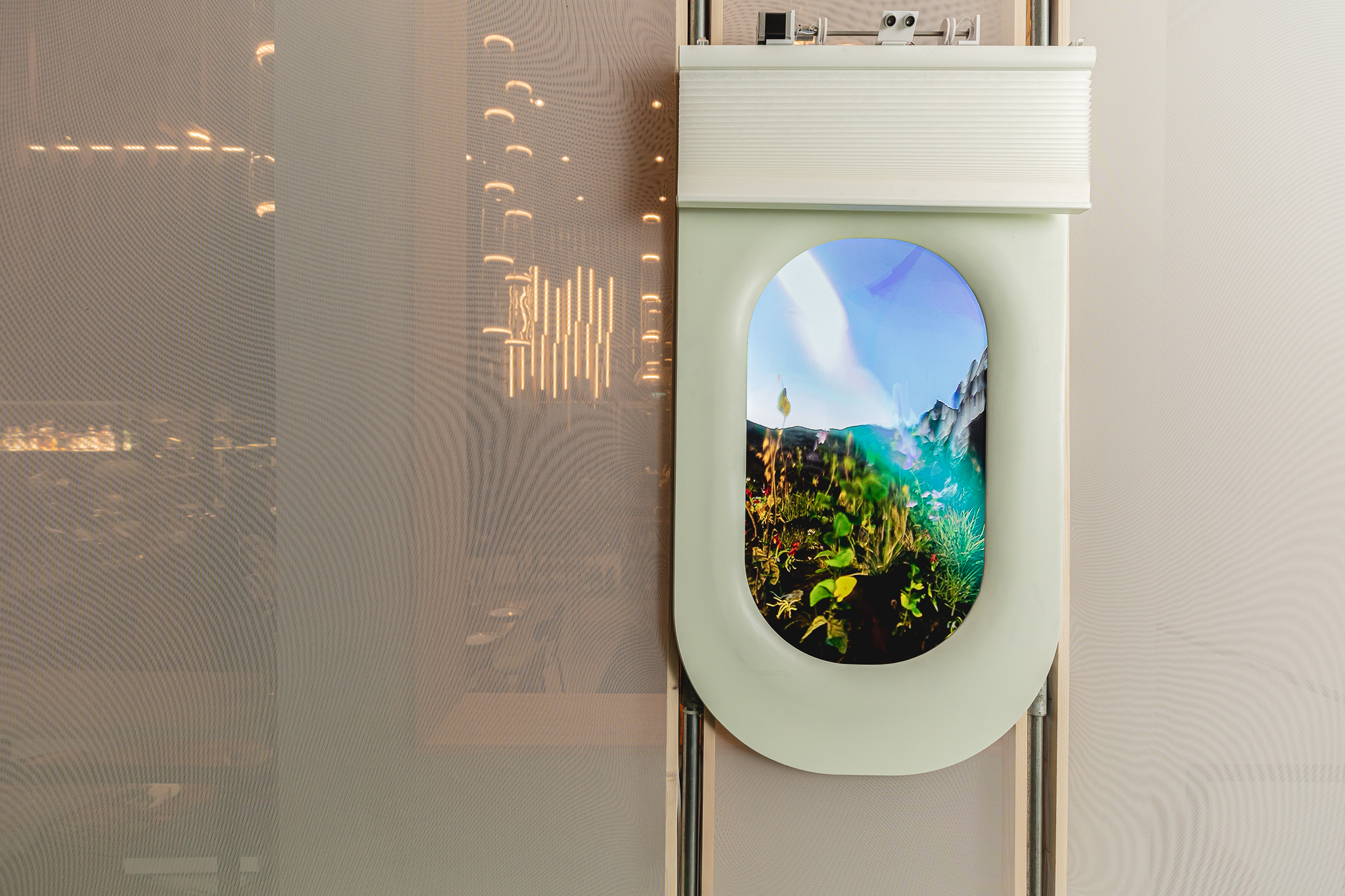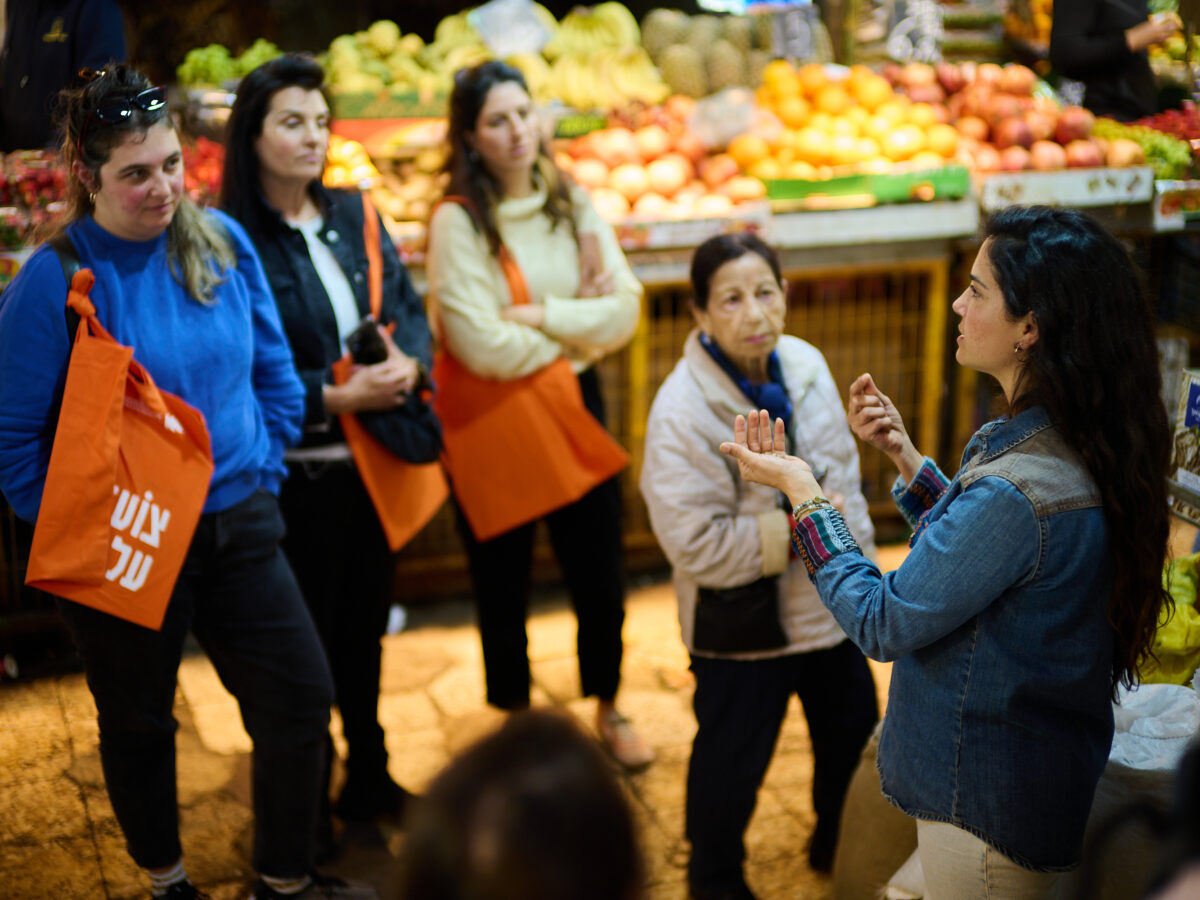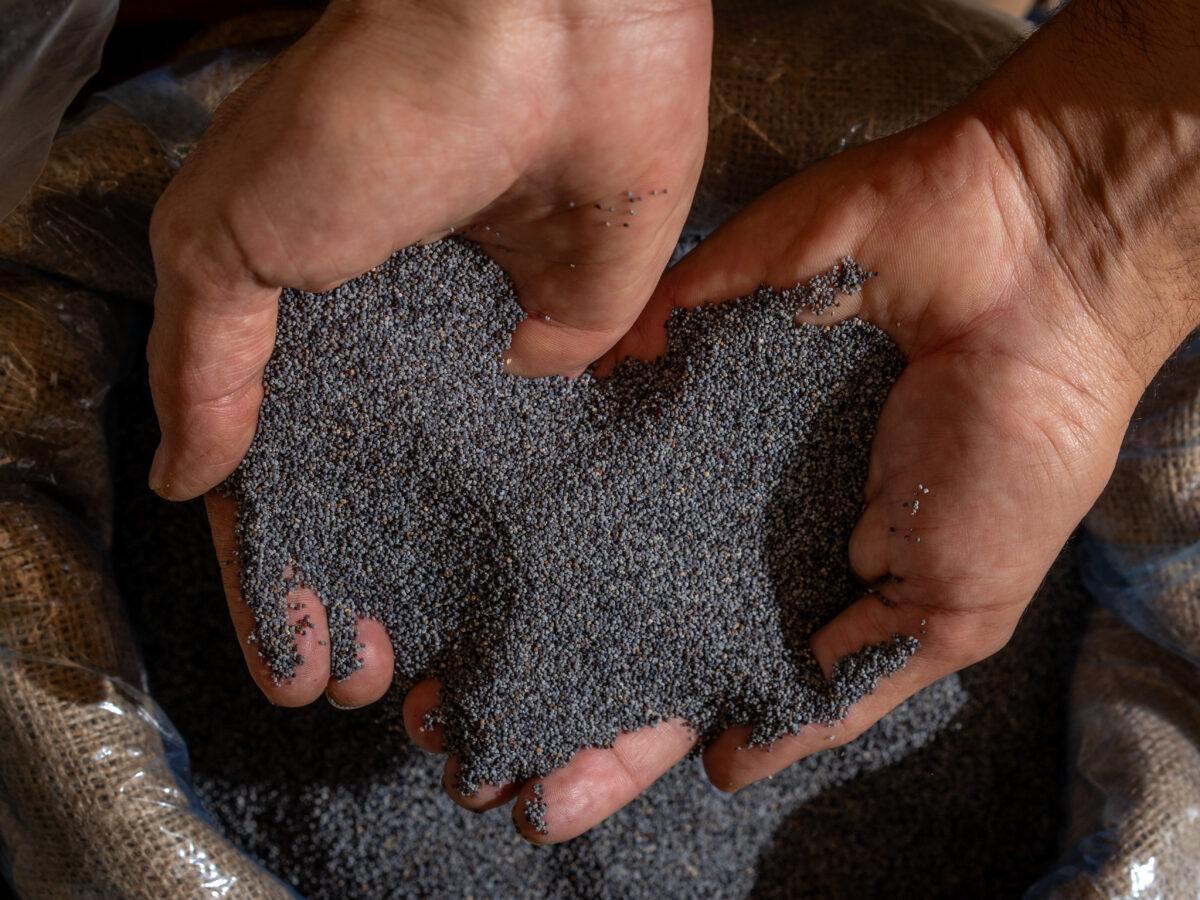Israeli-born designer Omer Polak says he he’s not the type of artist who comes to his work with a specific idea of what he hopes viewers will think when they see it. That’s true of “Picnic on Mars,” his latest installation, which opens at Asif in Tel Aviv on March 3. Instead, Polak says: “I want people to think, to ask questions, to ask themselves about their future — that’s what I want.”
The installation, which he describes as a celestial garden and a digital park, prompts visitors to consider the idea of a picnic on Mars. On the surface, the futuristic-sounding picnic is appealing, providing a sense of escapism, but on another level, it forces visitors to consider what might be wrong with this picture and what we can do to avoid it.
Polak sat down with writer and Asif consultant Devra Ferst to discuss the installation, why he uses food as one of his many artistic mediums, and what he would serve at a picnic on Mars.
Devra Ferst: Take us through “Picnic on Mars.” If we were to walk into Asif on March 3, what would we see?
Omer Polak: You enter the space and in the gallery and there’s a structure made out of metal tubs and all the walls are made out of this [fine mesh] fabric that keeps the relation between indoor and outdoor or inside and outside. It has this illusion, it kind of moves. You enter this space and it looks like a park on the floor with 24 screens. Those screens show a picture of grass that moves with the wind. On one of the screens, for example, you have chips that just fell on the grass and ants are eating them. There’s a lot of nuances from the real experience of a picnic.
In the middle of the space there’s one very important object: it’s a big stand with a laboratory tube made out of glass you can smell from. And inside it is the smell of Earth that I made together with one of the leading companies in the world for smells. It’s the smell of wet soil, so it takes you immediately to working in the garden.
All this area is man made nature, and there’s this one wall which is really high — six meters — with a vertical garden, with real plants from a startup in Israel called Vertical Field. This is the only real nature that we’ll have inside. It’ll be very jungle-like. At the end of the structure, you have windows in the shape of big airplane windows.
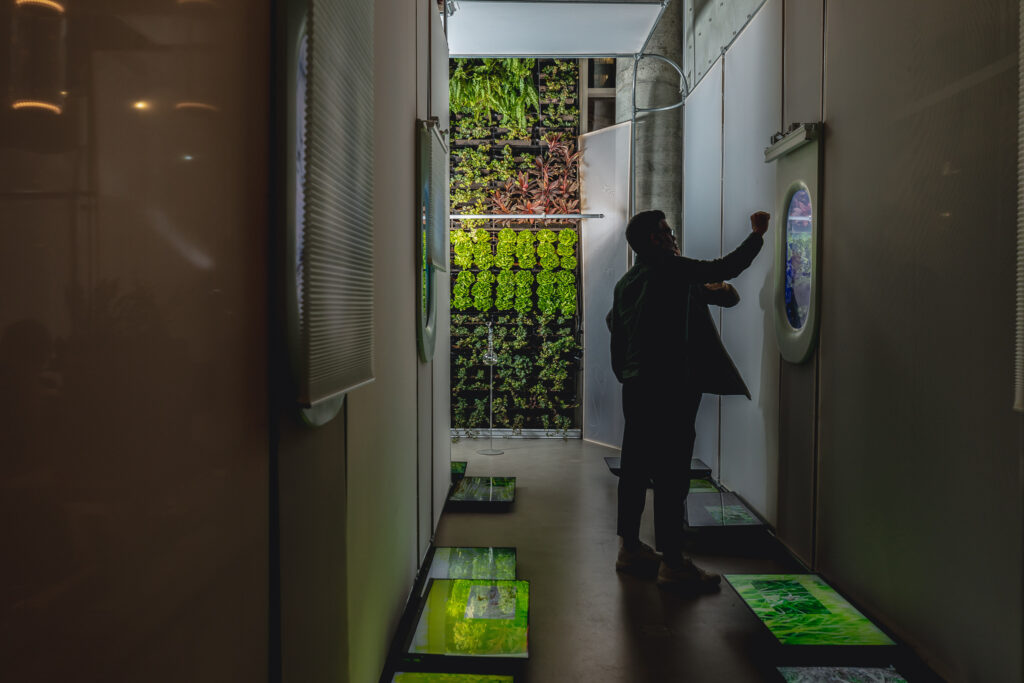
What do you see when you look out of the windows?
Behind them, we have a screen. You see four different videos; each one of them speaks about different realities. In one you will see earth turning and then you will see a lot of vegetables and fruits flying in outer space. In another video, you will see the nature of Mars. Basically you’ll see a landscape and slowly it will start to blossom. Another one will show you some kind of very abstract flyover of Mars with real images from NASA and some 3D images that we worked on. And we have another one, which is also a landscape, it’s made out of huge fossils of vegetables and fruits. And in between, you will see cuts from people planting things in a lab and growing stuff. Again, this is man made nature.
What will you see when you exit the structure?
In front of you is a huge screen with a live stream from the International Space Station, but you can always see earth, actually in real time.
This sounds both beautiful and surreal. Now that we can picture this, tell us about the concept of “Picnic on Mars.”
Basically you will enter into a speculative space, which is something between a digital park and a space to explore the idea of Earth. So when we are talking about “Picnic on Mars,” we are actually talking about here and now and not about the future. It’s dealing with the idea of speculative Martian food culture and how the expansion of humanity into outer space will affect the way we eat, the rituals, traditions, and everything that comes with it.
Also, the idea of indoor and outdoor are playing an important role here because picnicking, of course, is a kind of escapism to the outside. It gives you this sense of simplicity and spontaneity. And on Mars that can’t be, right? You can’t be outside. It has to be inside. You cannot bring everything that you like. So, what you take with you, is a really important decision.
That’s kind of the idea. The space is offering you some opportunities: it offers you a space to escape and to dream about different futures or realities. When people think of “Picnic on Mars” or they just hear the title, they say: “Wow, amazing. I want to be there. I want to go have a picnic on Mars.” But when you think twice about this idea, what does it really mean?
And this is, I think, the most important part of all of it. Because there is something a little bit apocalyptic. But when you start to understand what it means and what you will lose while being in outer space, I think it’ll affect people and the way they behave here on earth.
It’s interesting to think about it as somewhat apocalyptic, particularly in contrast to your idea of it being a celestial garden, which you talk about in your artist statement. What does the term “celestial garden” mean to you?
For me, this project in general and this celestial garden, it’s more about, it’s something between fantasy and reality. It’s the relation of us to nature. It’s how we decide to behave in daily life and what we eat and how we consume. For me, it’s a platform to enter and to be able to dream and to be able to escape the reality that we are in, in order to imagine new realities or possible realities.
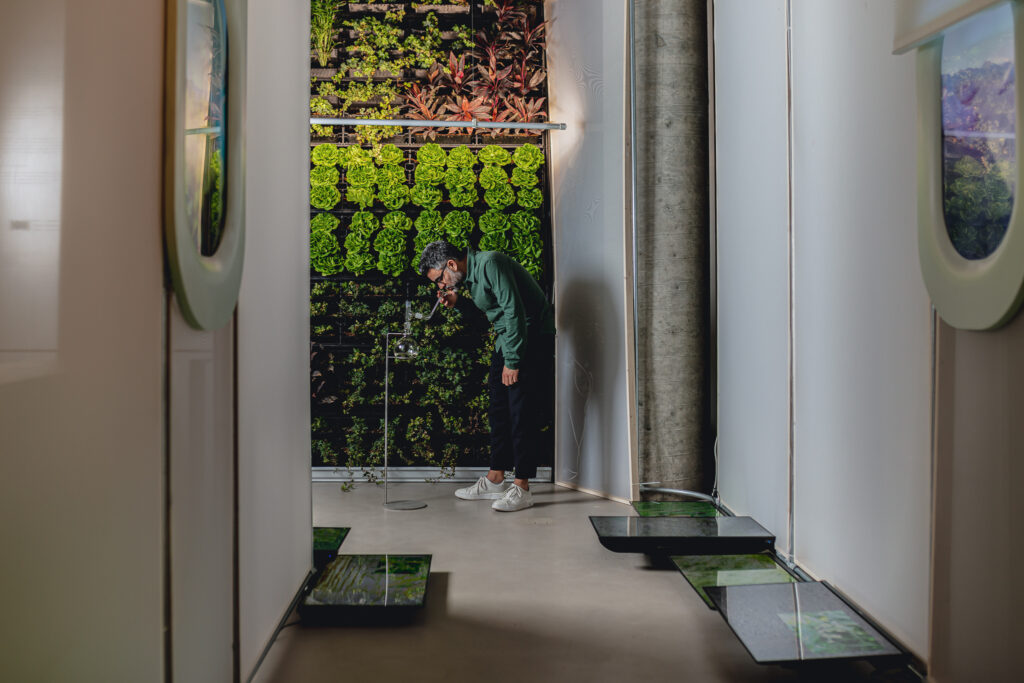
When people walk through the installation, what sort of thoughts do you hope it will provoke for them?
First of all, I hope that they will be confused a little bit. After that, they will go home and say: “Wow, it’s so beautiful here. We saw this thing, but it’s so weird. Why do we need this? What’s going on?”
I want people to think, to ask questions, to ask themselves about their future. That’s what I want. …People to think and to consider and to have discussions about this possibility and about the idea: Why do we actually need to go to Mars? And from this question, they will understand that basically we have to change the behavior of our society here on earth in order to avoid such a black mirror scenario.
If we were to go to Mars, the six or seven month journey would provide us literal time and space to look down on earth — sort of like the windows in the installation. What are you hoping that people will see when they look back on earth, both as a society and as individuals?
When you speak with astronauts and you see videos on YouTube and interviews, they’re all talking about this moment that they see this planet and they understand how stupid it is to behave as we do on every level, social, economical, political, wars — and how important it is to spend the time and the energy to save this planet. That’s what I hope people will be able to think about and feel.
How do you hope that this installation will change visitors’ behavior or thinking around sustainability?
Some people will be inside, take a picture for Instagram, be happy, and that’s fine. But I’m sure that if someone will spend a bit of time and think about: “Why do I need the smell of wet soil? I can just go outside. Why do I need to come and smell it here?” …To show someone grass moving from the wind, but not to feel the wind… It’s kind of like dividing an experience into a very specific moment and giving you the ability to focus on a particular special moment. And I believe that by this, it will affect the way they think about this planet and the way we want to save it.
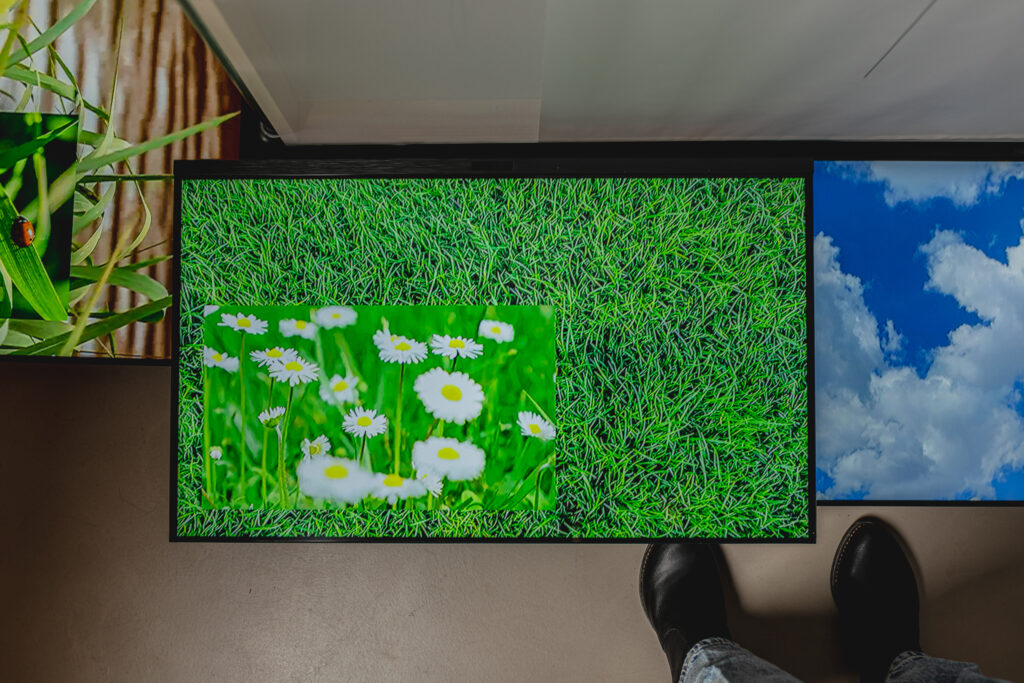
One of the things about this installation that has been discussed amongst the Asif team is: Are we earthlings who are going to Mars just for a picnic and then turning around and coming back? Or, is the idea that we live on Mars and we are having a picnic? Which is it for you?
So more the second one, but actually not this and not that. We have the idea of the picnic on Mars and the journey. Picnicking it’s very easy, you go out, you experience being in nature and it’s easy escapism. But the escapism of going to Mars, it’s a escapism that comes from a need. If the scenario is that we’ve destroyed Earth and then we have to escape… So that’s one of the scenarios.
And, who is reaching Mars first? The rich people, right? Especially now when it’s shifted from a governmental journey to private companies. One of the scenarios could be that big companies take over Mars. So, there are a lot of ethical questions.
It’s an interesting time to talk about escapism with COVID. Has that influenced your thinking?
This project started long before Corona, but during Corona, escapism became a bigger part of the idea. In Germany, I think picnics are what saved people’s minds. Everyone went on picnics. And in Israel, in the lockdown, when people weren’t even allowed to leave home, people would picnic as an activist act. They would take some stuff and find the great location behind some bushes that used to be the toilet of the park. But now it’s the most precious spot because no one can see you and you can build up your picnic. The idea of a picnic during COVID definitely has much more meaning.
In some of your past work, and of course this installation, food is a key component. Why is food an important medium for you, particularly in this piece?
When I’m saying that I’m dealing with food, I mean, I deal with everything around food as well. It’s about tradition. It’s about culture. It’s something that came from my home. I come from a mixed family, from a Moroccan mom and my father is Yugoslavian. Food is a major part of the family. Everything is happening around the table.
I’m more interested in the stories behind it than the taste sometimes. And it’s another medium, and as an artist, I use different mediums, I use technology, I use nature, I use smells and it’s mostly for me about the experience. And that’s why the space has no food inside at all — only a platform for everyone to come in and to experience this idea.
The one place where edible food comes into this is the “Mars Pantry,” a project created by Asif next to your installation that allows visitors to add a jar of what they would want to bring to Mars with them, whether it’s spices from their grandmother or even a jar of gefilte fish. What would you add to the pantry?
In the last few months I was teaching at Shenkar College of Design and Engineering in the master program and my course was called Picnic on Mars. For the first meeting, I asked my students to bring something that they would take to Mars. It’s very hard for me to say what I would take with me but I can give you an example from them.
One said: “There are so many things I will take with me, actually, everything, but I wouldn’t take some things. And I wanted to bring something that I wouldn’t take with me.” Then she showed padding from a bra. She said that she went through breast cancer. Here on Earth, it’s something she needs to hide. And she hopes that on Mars, we’ll have the possibility to come up with different values in our society and to design our society differently, to have this freedom that you feel on a picnic in everyday life on Mars. So, I hope the stuff we take with us will help us shape our society in a better way.

If you could transport yourself to Mars right now, who would you take with you and what would be on your picnic blanket?
Definitely my family. What would be on the blanket? I hope not only a lot of algae and stuff like that, I hope it’ll be a little bit more colorful with the smell of food. I would take my mom’s orange cake, good bread, and hummus. It’s a bit cliche, but what can I say? I would take hummus with me.
Hummus actually ties well into my last question. How, if at all, do you feel that having this installation in Israel impacts the work, or do you feel that you could put this installation anywhere?
It’s kind of an international installation. However, I think that the thoughts and conversations of people [who visit] will take it into the location and the local place. Here, you think about kosher, you think about Shabbat dinner, you think about religion in general. Will we have religious thinking on Mars or not? Again, it’s a platform to put your thoughts and to use your mind. So it doesn’t matter where it is, it matters who is visiting.
This conversation has been edited for length and clarity.
